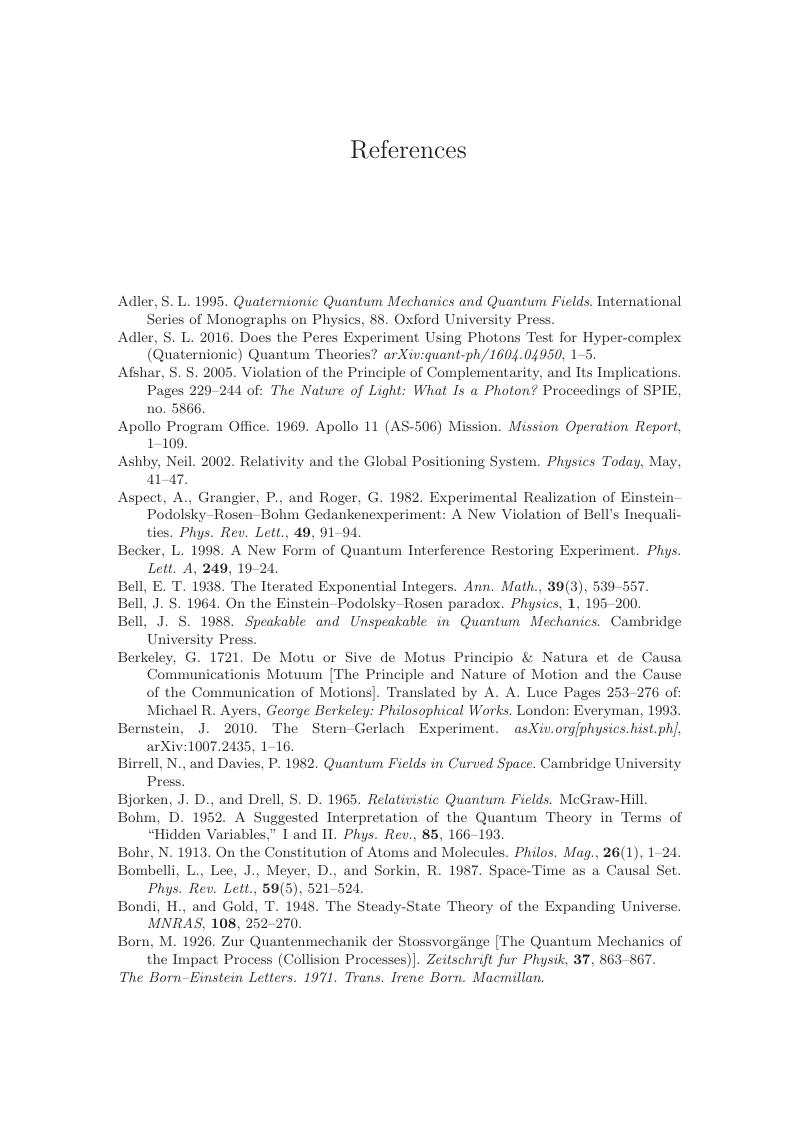Book contents
- Frontmatter
- Contents
- Preface
- Acronyms
- 1 Introduction
- 2 Questions and Answers
- 3 Classical Bits
- 4 Quantum Bits
- 5 Classical and Quantum Registers
- 6 Classical Register Mechanics
- 7 Quantum Register Dynamics
- 8 Partial Observations
- 9 Mixed States and POVMs
- 10 Double-Slit Experiments
- 11 Modules
- 12 Computerization and Computer Algebra
- 13 Interferometers
- 14 Quantum Eraser Experiments
- 15 Particle Decays
- 16 Nonlocality
- 17 Bell Inequalities
- 18 Change and Persistence
- 19 Temporal Correlations
- 20 The Franson Experiment
- 21 Self-intervening Networks
- 22 Separability and Entanglement
- 23 Causal Sets
- 24 Oscillators
- 25 Dynamical Theory of Observation
- 26 Conclusions
- Appendix
- References
- Index
- References
References
Published online by Cambridge University Press: 24 November 2017
- Frontmatter
- Contents
- Preface
- Acronyms
- 1 Introduction
- 2 Questions and Answers
- 3 Classical Bits
- 4 Quantum Bits
- 5 Classical and Quantum Registers
- 6 Classical Register Mechanics
- 7 Quantum Register Dynamics
- 8 Partial Observations
- 9 Mixed States and POVMs
- 10 Double-Slit Experiments
- 11 Modules
- 12 Computerization and Computer Algebra
- 13 Interferometers
- 14 Quantum Eraser Experiments
- 15 Particle Decays
- 16 Nonlocality
- 17 Bell Inequalities
- 18 Change and Persistence
- 19 Temporal Correlations
- 20 The Franson Experiment
- 21 Self-intervening Networks
- 22 Separability and Entanglement
- 23 Causal Sets
- 24 Oscillators
- 25 Dynamical Theory of Observation
- 26 Conclusions
- Appendix
- References
- Index
- References
Summary

Information
- Type
- Chapter
- Information
- Quantized Detector NetworksThe Theory of Observation, pp. 357 - 364Publisher: Cambridge University PressPrint publication year: 2017
